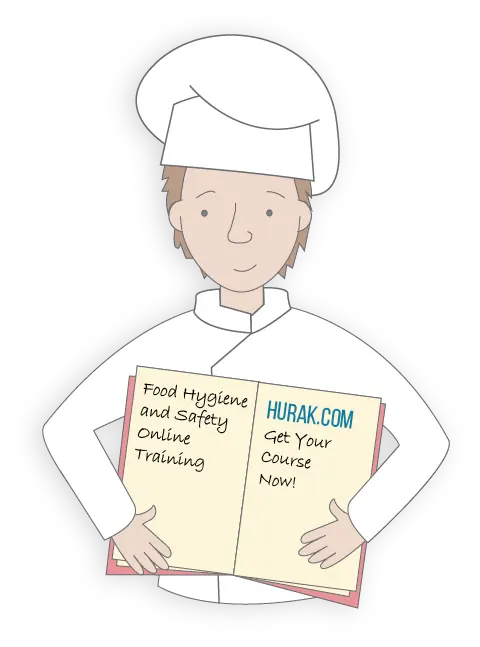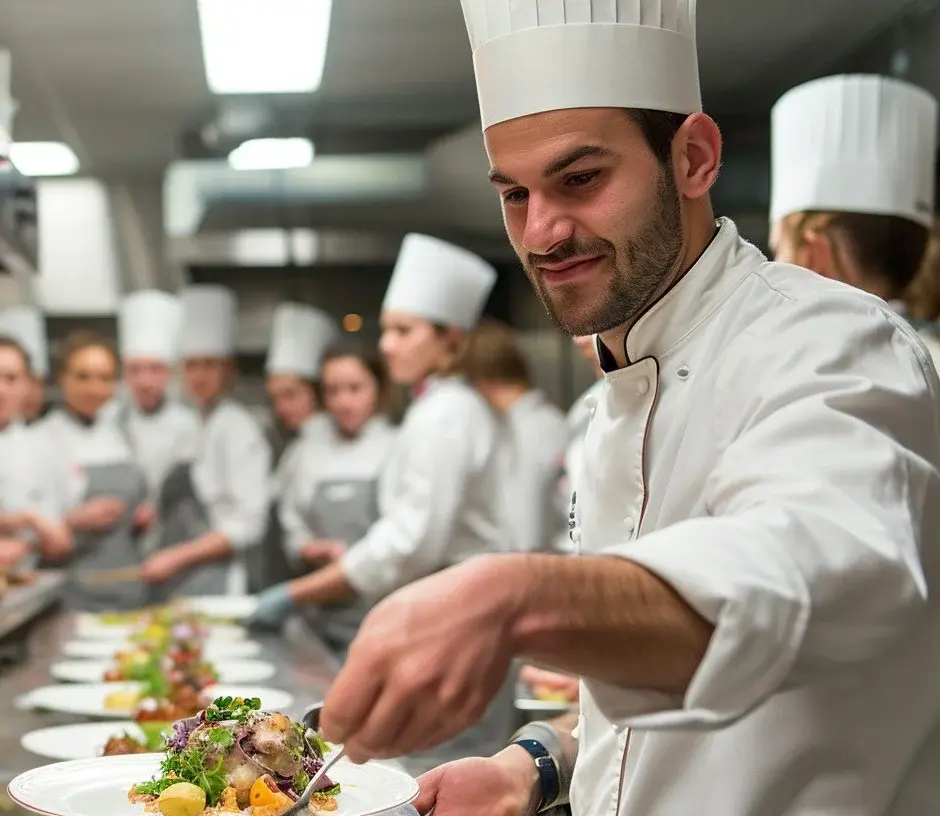Certain types of food are more likely to get contaminated, and it is important to identify these high-risk food types. Understanding the sources of contamination and taking proper storage measures is key to reducing food contamination.
The Food Standards Agency (FSA) reported increased food poisoning cases in the UK. In 2009, there were around 1 million cases annually, but by 2022, this number had risen to 2.4 million. Food poisoning is a serious health issue when contaminated food is eaten.
What are the Food Risk Categories
High-risk food types have an increased chance of harmful bacteria growing and are stored under refrigeration.
Low-risk food is typically low in moisture and contains high sugar and salt content. Bacteria struggle to multiply under these conditions, so it is stored safely at room temperature.
Get Online Food Safety Courses
Food Hygiene And Safety
Check the CourseRated Excellent
on major review sites

Explaining High-Risk Food
High-risk food types are ready-to-eat items. They do not undergo further heat treatment or cooking to protect against microbial contamination. They act as breeding grounds for the growth of pathogenic bacteria.
High-risk food has a high protein content and a higher chance of bacterial spread. It requires careful handling and storage to prevent microbial growth.
Examples of High-Risk food include:
- Cooked meat and poultry:
- Beef, pork, ham, lamb, chicken, turkey, duck
- Cooked meat products:
- Meat pies, pasties, pâté, meat stock, gravy, cook-chill meals
- Dairy products:
- Milk, cream, artificial cream, custards, products with unpasteurised milk, ripened soft and moulded cheeses
- Egg products:
- Cooked eggs, quiche, products containing raw or lightly cooked eggs (e.g., mayonnaise, mousse, homemade ice cream)
- Shellfish and seafood:
- Mussels, cockles, cooked prawns, raw oysters
- Starch dishes:
- Cooked rice, pasta

Explaining Low-Risk Food
Low-risk food remains safe at room temperature. It is less likely to cause food poisoning. Examples include:
- Preserved food:
- Smoked or salted fish
- Dry good:
- Bread, flour, biscuits
- Acidic food:
- Pickled foods, vinegar, fruit
- Fermented products
- Salami, pepperoni
- Food with high sugar/fat content:
- Jam, chocolate
- Unopened tinned food
These food types typically contain low moisture or are preserved to inhibit bacterial growth, reducing the risk of contamination and foodborne illnesses.
Is Raw Chicken a High-Risk Food?
There is a misunderstanding that raw chicken is high-risk. Although eating improperly cooked or thawed raw chicken can lead to illness, it is not a high-risk food type. In the UK, it undergoes additional cooking or roasting before consumption, destroying bacteria.
For instance, raw chicken provides an ideal environment for bacterial growth due to its protein content and moisture. However, this does not categorise it as a high-risk food unless eaten raw.
On the other hand, cooked chicken, having undergone preparation and cooking, is immediately eaten without further treatment. If contaminated post-cooking, it can lead to foodborne illnesses. Therefore, it is a high-risk food.
How Does Bacterial Spread Occur in Food
Bacteria can multiply rapidly under suitable conditions. Especially at the Danger Zone Temperature, bacteria can double in number every 10 to 20 minutes.
These multiplying bacteria absorb nutrients from their surroundings through their cell walls and release toxins that can cause illness if consumed.
For bacteria to multiply, they require:
- Protein
- Moisture
- Warmth
- Neutral pH conditions (not too acidic or alkaline)
- Sufficient time
For example, an apple contains moisture but lacks the protein needed to support bacterial growth, making it a low-risk food.
How Should You Store and Handle High-Risk Food
Detecting contamination of high-risk food is not always possible through sight, smell, or taste. Therefore, correct storage is important for preventing contamination with high-risk food.
Lowering temperatures significantly slow down this growth process, making refrigerators and freezers important for preventing bacterial spread.
The table below lists the causes and prevention of high-risk food types.
| Cause of High-Risk Food Contamination | Prevention of High-Risk Food Contamination |
| Inappropriate cooking or reheating temperature | Confirm that the internal temperature of the food reaches 75 degrees or above while cooking or reheating |
| Inappropriate food storage conditions | Raw and cooked food must be stored separately Properly rearrange food according to their type. Maintain fridge temperature at below 5 °C and your freezer below -15 °C. |
| High-risk food left exposed at the Temperature Danger Zone | Do not leave food to thaw or defrost at room temperature for over 2 hours. |
| Handling food using unclean equipment or surfaces | Use different colour-coded chopping boards or utensils for different food types |
| Handling food using unwashed hands | Wash hands before and during food preparation using the 7 steps for hand hygiene |
| Food eaten after the ‘Use By’ date | Microbial growth will likely occur in high-risk food types if eaten beyond their ‘Use By’ date. Follow the FIFO Food Stock Rotation Method for the timely consumption of food to prevent food-borne illnesses. |
| Carelessness in detecting food-related hazards | Implement the HACCP process throughout the food production and supply cycle. |
Conclusion
Colour-coded chopping boards help keep your food and customers safe by minimising microbial cross-contamination and allergenic cross-contact risk. Using separate chopping boards for different food types is a good kitchen practice that controls contamination. Be consistent with your specific chopping boards, and discard those with prominent cracks and damage.




